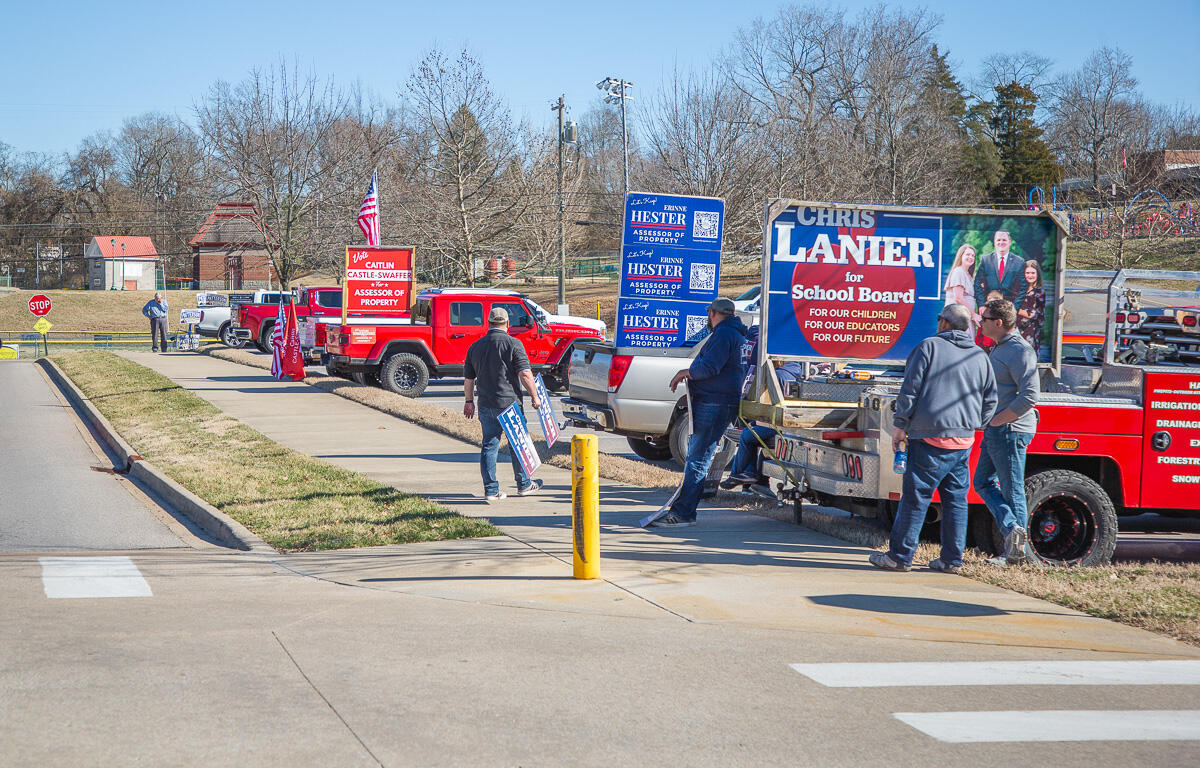Clarksville Now publishes opinion pieces representing both sides of a variety of topics. Opinions presented do not necessarily reflect those of the newsroom or management. To join the conversation, email your opinion piece to news@clarksvillenow.com.
Contributed commentary by Chris Smith, Clarksville Now editor-in-chief.
On Tuesday night, Montgomery County held its presidential and county primary, with races on the ballot from president to property assessor to School Board seats. Here are three takeaways from the election and its results.
1. Record low turnout for presidential primary
The local voter turnout for Tuesday’s election was only 8.89% (that’s early and absentee plus Election Day combined). While voter turnouts in the single digits aren’t unheard of in Montgomery County, they typically only happen when all of the races are local. When comparing voter turnouts, it’s important to compare apples to apples, and this one made history: It’s the first presidential primary since at least 1996 with single-digit turnout:
- 1996 – Selecting Dole to challenge Clinton: 10.97%
- 2000 – Dual primary to replace Clinton: 28.59%
- 2004 – Selecting Gore to challenge Bush: 11.58%
- 2008 – Dual primary to replace Bush: 28.73%
- 2012 – Selecting Romney to challenge Obama: 11.51%
- 2016 – Dual primary to replace Obama: 25.36%
- 2020 – Selecting Biden to challenge Trump: 18.9%
- 2024 – Selecting Trump to challenge Biden: 8.89%
Dual primaries such as this one – when the incumbent president is term-limited and both parties are selecting nominees – draw the best turnout, from 25% to almost 29%.
The primaries where one party is selecting a candidate to challenge an incumbent have drawn the least – usually 10% or 11%, though turnout hit almost 19% in 2020 to pick a challenger for Trump.

What message does Tuesday’s low turnout send? It likely depends on your political stripes. Trump emerged early as the takeaway winner on the Republican side. Some say it shows a lack of enthusiasm for his campaign, others a degree of comfort that the nomination process was over before it began.
One thing is clear: In Montgomery County, being Republican doesn’t mean automatic loyalty to Trump. While Trump took 75% of the vote, 20% of Republican voters here chose Nikki Haley. Statewide, it was 77.3% Trump and 19.5% Haley. Haley is now out, but which way will those 20% go in November?
MORE: Final results in Montgomery County primary for President, Property Assessor, School Board
2. Young parents seek School Board seats
The Clarksville-Montgomery County School Board will see generational shifts when the new members step in, regardless of who wins in August. In Tuesday’s primary, veteran board member Charlie Patterson finished second in a three-way race, with about 30% of the vote to Chris Lanier’s 50%.
Patterson, 77, has many connections to CMCSS, including two grandchildren in the system. He served 14 years on the School Board, and prior to that served 16 years on the City Council. But for voters, that wasn’t enough, or perhaps it was too much. Both candidates running against him for the Republican nomination were parents with no prior government experience.
The race for District 2 has a similar pattern: Longtime School Board member Margaret Pace decided not to run for re-election, and the candidates to replace her are mostly parents pursuing office for the first time.
A lot could change for the seven-member School Board as experienced, older members are replaced by young parents with perhaps different priorities.

3. Democrats have work to do
This was clear when the ballot settled, but things crystallized during the campaigns in contested races: There were no contested races on the Democratic ballot – not for president, not for School Board. Zero. None. As a result, the Republican ballot sucked all the energy out of the room that is Montgomery County politics. The only watch party that mattered was the Republican one at Ruby Cora, where two contested candidates (Lanier and Erinne Hester) and two uncontested (Ashleigh Travis and Jeff Bryant) had a great night.
Yes, there were candidates on the Democratic primary ballot, and perhaps they can count themselves lucky to save their energy for the general election in August, but that’s several months worth of name recognition and attention that they aren’t able to capitalize on.
The local Democratic Party has been making strides in organizing and fielding candidates to run for office, so there may come a day when the local Dem ballot is more robust. But it wasn’t Tuesday.
MORE: 5 candidates sail past March 5 primary unopposed, some also unopposed in August


